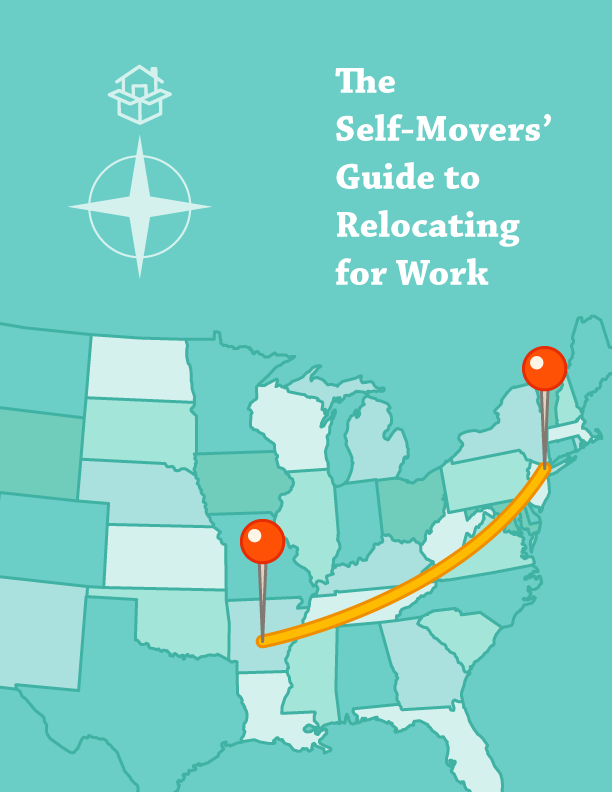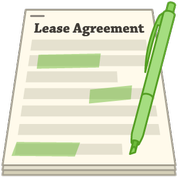 Yes, most musical instruments come with their own case.But in order to avoid a sad symphony of disappointment post-move,you’ll need to take some extra measures when packing your prized noisemakers for transport.
Yes, most musical instruments come with their own case.But in order to avoid a sad symphony of disappointment post-move,you’ll need to take some extra measures when packing your prized noisemakers for transport.
Here are Moveline’s tips for a harmonious instrument-moving and packing experience:
First, work with Moveline and your designated Move Captain to select the moving companythat’s a perfect fit for your stuff. Your move, and instruments,may require a climate-controlled truck, so be sure to let them know what you’re packing.
For stringed instruments like guitars and cellos, loosen the strings first,and then wrap the instrument in bubble wrap and tape before placing it into its case.If there’s a lot of free room inside the case, fill in the gaps withcrumpled newspaper to the point where it’s full but the case can be closed easily.
For brass instruments, remove and pack the mouthpiece separately with bubble wrap and tape,and then pack the body of the instrument in the same manner as the stringed instruments above.
Drums can be taken apart and packed as individual pieces, but if you have a largerand pricier instrument like a piano, this may the time to call in a professional.The amount of damage you could potentially do to animproperly-packed piano may put a large ding in its value.
If you don’t have a case for your instrument, it can be packed in a similar way to packing fine china: a secure fit in a sturdy box with a layer of packing peanuts betweenall sides of the instrument and the box. Unlike china, however,never place more than one instrument in a box.
Pro tip: always give stringed and woodwind instruments at least 24 hours to acclimateto room temperature in your new place before playing them again.Tighten and retune strings as necessary, and then play on, brother!
If you’re a musician, you likely have some other fun toys that require additional careduring the moving process.Check out our guide to packing electronics and feast your ears on Moveline’s moving day playlist to start things out on a sweet note.Most importantly, let us help you move better; it’s what we do best, and it’s free.
 Perhaps to you it’s nothing more than a tangle of cordschoking dust bunnies behind your TV stand. But to tech nerds like us,electronics are everything! They also happen to be expensive and highly susceptible to damage.That’s why the Moveline team takes packing electronics super seriously.
Perhaps to you it’s nothing more than a tangle of cordschoking dust bunnies behind your TV stand. But to tech nerds like us,electronics are everything! They also happen to be expensive and highly susceptible to damage.That’s why the Moveline team takes packing electronics super seriously.
For all the ways electronics make our lives more productive (okay, sometimes less)and entertaining (sometimes to a fault), they deserve as much TLC as your great gram’sheirloom china (yup, we have a china packing solution for that too!) So before you pack up,make sure you’re packing smart with these 3 steps:
1. Get your wires right.
Power down and unplug your items. Remove cords and wires from main device,secure with twist ties and label appropriately.This is where it pays to be a little OCD – get organized now and reap the benefitsof well-planned packing later.
2. Do some pre-emptive trouble-shooting.
If you’ve got a piece of complicated equipment and have misplaced its manual,take some pictures of the wire hookups before you pull them apart.In case you’re more verbal than visual, write your own step-by-step guidewhile dismantling the equipment so you can refer to it (backwards!) when reassembling the item.
3. Pad like your life depends on it.
Your best bet is to pack your electronics in the boxes they came in.If those boxes were turned into makeshift cat condos long ago, your options are to:
-Try to obtain product-specific boxes from the item’s manufacturer,
-Buy special electronic boxes from a moving company, or
-Use any other durable cardboard box you have in your arsenal.In whichever case, carefully secure your items with anti-static packing materials or soft cloths.(WARNING: packing peanuts can conduct electricity and damage electronics,and newspaper can scratch screens.) Pad underneath, on the sides, and on top.Pad, pad, pad away, then be sure to label the boxes with ‘FRAGILE’ and ‘ELECTRONICS’and draw some arrows so your moving crew knows exactly how to handle the goods.
Now that you’re all unplugged and ready to roll, read up on how to make the most of your moving day, and once you’re in the door,be sure to use Moveline’s comprehensive list of unpacking tips as your guide.And for the biggest stress reliever of all, let us help you find the right mover,at the right price, and make sure your big day goes just swimmingly.The best part: we’re free. So, let us help you move better.
 We’ve helped more than a few folks move here at Moveline; after all, it’s our specialty.While some people have the luxuryof moving on the company dime orotherwise enjoy things being taken care of on their behalf,an overwhelming amount of people are on their own when it comesto budgeting and executing a move to a new city.It’s our mission to simplify the process of relocating from point A to point B,and for those who are in the midst of a job search(or who are moving for a job but have to foot the bill themselves),a host of other considerations exist.
We’ve helped more than a few folks move here at Moveline; after all, it’s our specialty.While some people have the luxuryof moving on the company dime orotherwise enjoy things being taken care of on their behalf,an overwhelming amount of people are on their own when it comesto budgeting and executing a move to a new city.It’s our mission to simplify the process of relocating from point A to point B,and for those who are in the midst of a job search(or who are moving for a job but have to foot the bill themselves),a host of other considerations exist.
So, we’ve taken our experience helping people move across the state,the region and even the country for the sake of their careers (and often, their happiness, too)and compiled a free, useful guide out of it. Its goal is to help younavigate the process of moving to a new city for work and come out on top inyour relocation adventure.Read on for a quick overview of our ABC’s of moving yourselfto a new place to advance your career and quality of life.
What we cover in The Self-Mover’s Guide to Relocating for Work
Here’s a sneak peek:
- Tips for tapping into the right networks to help you find the right job, if you’re looking for one
- An insider’s perspective on hiring great moving & storage companies and avoiding scams
- A primer on finding temporary housing if you need it,plus ideas for feathering your new nest on the cheap
Our Self-Movers’ Guide to Relocating for Work is available online at no cost,courtesy of the team at Moveline. Enjoy, and good luck, go-getters. Let’s get moving.
 The funny thing about fine china is that it is a huge responsibility.It’s typically passed down among generations, so chances are someone other than the person who owns it also has a vested interest in its safety. No pressure, right?
The funny thing about fine china is that it is a huge responsibility.It’s typically passed down among generations, so chances are someone other than the person who owns it also has a vested interest in its safety. No pressure, right?
Best case scenario: your movers are handling the sensitive stuff on your behalfand it’s all handsomely insured. Less-wonderful scenario: you’re packing it yourself.But not to worry! To avoid chips, cracks and a bitter family feud,just follow Moveline’s steps for transporting your china to your new place sans incident:
- Separate your pieces into like categories: plates, bowls, stemware, etc.Then organize them a second time by size.
- Wrap each piece in a good amount of tissue paper and secure with scotch tape,which won’t rip through the tissue.
- Wrap each piece a second time with 3/16 bubble wrap, ensuring all sides are covered.Use your stronger packing tape here to avoid unraveling.If you’ve done this correctly you shouldn’t be able to feel any part of the item,just the bubble wrap.
- Wrap each piece a third time with 1/2 bubble wrap. This may seem excessive,but it’s better to be safe than disowned by your grandmother.When packing plates, you can snake the bubble wrap between the dishes hererather than wrapping each again.
- Fill a box with at least three inches of packing peanuts.Lay your first and largest layer of items on top,leaving about three inches of space between the edges of the china and the sides of the box.Add some more peanuts and lay down your next layer of china.Repeat until the box is full, but don’t overdo it.It helps to gently shake the box and let the peanuts settle as you go to ensure you’vegot a fit that’s tight, but not under pressure.Your top layer should be a final three inches of peanuts.
- Seal every seam of the box with high-quality tape.Label each box with ‘FRAGILE’, ‘THIS WAY UP’ and ‘GRANDMA ROSE IS WATCHING’.Now, rest easy; you’re in good hands.
Not sure what to do with your other high-risk home goods? Read up on when to use a moving crate and make sure you understand what’s covered under your moving insurance.And as always, if you’re planning a move, let Moveline help and avoid a headache.
 You’re moving to San Francisco and you’ve never lived there before– maybe you’ve never even visited. So how are you going to find the right neighborhood for you– the one that will have the kind of vibe you’re looking for and still be affordable?A good place to begin is to take a look at these sites:
You’re moving to San Francisco and you’ve never lived there before– maybe you’ve never even visited. So how are you going to find the right neighborhood for you– the one that will have the kind of vibe you’re looking for and still be affordable?A good place to begin is to take a look at these sites:
- SF.curbed.com: This is the go-to source for the up-to-the-minute scoop on neighborhoodsand real estate. Check out Mallory Farrugia’s Comparisons Columns for an ideaof the difference in value from one neighborhood to another,and do a search for any neighborhood you’re considering.
- COEverywhere.com: This new app, launched in 2013, began as a resource for people movingto San Francisco but has expanded to include broader information.Put in a neighborhood location and the app organizes all relevant local news, tweets,Facebook posts, Foursquare tips, groupon deals, yelp reviews and more.
- SFGate.com: Compiled by the staff of the San Francisco Chronicle newspaper,this is a no-nonsense guide to the various city neighborhoods.
- thebolditalic.com: Don’t miss this site’s laugh out loud,unorthodox survey of SFO neighborhoods by Drew Hoolhorst.Here’s how he describes the Presidio: “It’s really beautiful here and lookslike you live in a forest. The problem is that your friends think you live in a distant forestand will probably never visit you.” That’s why he’s renamed it“No one is gonna come and visit you no matter how cool your house is -landia.Hoolhorst says that he moved to the city at age 24 and played pin the tail on the mapto find his first apartment: “I ended up in the worst part of townliving with with 5 random people… so after living here for 10 years,this is how I would explain where you should move.”
Of course, the best way to choose a neighborhood is to spend time in it.“As someone who moved here only having visited twice, I’d say that the best wayto learn the different neighborhoods is to go exploring.They are all so different, you really can’t get a sense of them untilyou explore them yourself,” says Farrugia.
Brendon DeSimone, an expert with Zillow, tells people to rent for six months“just to make sure you’ve got the right neighborhood.You need to learn about each of the different neighborhoods,what makes them unique and what appeals to you.Many people who move here work in the South Bay in Silicon Valley,so if you live in the north part of town you can add 25 minutes to your commute each way.”
“And there are so many micro climates in the city,” he continues.“You can walk out your door in Potrero Hill in July wearing shorts and a t-shirt.If you drive over to the Presidio or the Marina, it can be cold and foggy.Some neighborhoods have wind tunnels or fog rolling in at certain times of the day.Many get soaked in fog every day. If you don’t live in San Francisco long enough,you won’t learn these microclimates or experience the unique flavor,culture and people of each neighborhood.”
We asked Farrugia, our go-to San Francisco real estate maven,to tell us the neighborhoods she thinks would be the best values for first-time buyers or rentersin the city.
“There are a couple of factors that determine whether or not a place will be a good value.The main one is transportation. The city has a solid bus system,but it’s nothing compared to the NYC subway. Even if you think you’re fine to walk or bike,remember: there are crazy hills in this city! So that’s not always practical,and I learned this the hard way. So if you are not going to have a car, it makeschoosing a place close to a Muni bus line really essential.If you have a car, you are freer to choose places in less central orpublic transit accessible neighborhoods.”
Here are her picks for the four neighborhoods that she recommends for new arrivals:
- Inner Richmond: This the the neighborhood she thinks is best.“It’s not super-hip, but it’s up and coming. There’s a major bus line that goes through it,so it will work for anyone without a car. It’s right by Golden Gate Park,which is a plus, and if you look really hard, you can find an affordable place to livethat’s right on the border between Inner Richmond and NoPa– which is a very hot, expensive neighborhood.”
- Nob Hill: “This has traditionally been a fancy neighborhood,but it’s just not hip anymore, so you can find some nice places at a good price.But beware — it really is on a giant hill, so walking can be rough.It’s super quiet and safe. I’d say this spot is best for people with cars–but parking can cost as much as $300 more per month.”
- Potrero Hill: “This is way out on the outskirts of town,but there’s a nice little neighborhood cropping up there. You definitely want a car,but parking is more affordable, so maybe the tradeoff is worth it.Cute restaurants like Plow are leading the way towards hip and friendly.Lots of modern loft buildings are going up on the waterfront, too.”
- The Mission: “This has been a relatively inexpensive neighborhood for a long time,because it has had gang-related crime problems in the past.Now it’s the hippest part of the city when it comes to food and is definitelyon the road to gentrification. You can still find inexpensive places in the Mission,but they tend to be small and don’t offer parking.”
In addition to getting a better understanding of the neighborhoods, Moveline has also put together this guide to understanding the real estate market in San Francisco.
Whether you’re moving to San Francisco or any other city in the US, let Moveline help.We’ll help you get a complete inventory, compare moving quotes, and find the perfect mover– all for free. Get us in your corner and we’ll take the stress out of your move. It’s what we do.
 If you’re considering buying a foreclosed property or one that’s a short sale,your motivation is pretty powerful: the chance to get abelow-market bargain on the home you’ve always wanted.Buying a foreclosed or short sale property may be the right way for you to go,but not until you’ve done your homework and gotten the advice ofboth real estate professionals and the folks who haveactually bought their homes this way.Fortunately, the Moveline team is here with a quick reference guide to help you know what’s what.
If you’re considering buying a foreclosed property or one that’s a short sale,your motivation is pretty powerful: the chance to get abelow-market bargain on the home you’ve always wanted.Buying a foreclosed or short sale property may be the right way for you to go,but not until you’ve done your homework and gotten the advice ofboth real estate professionals and the folks who haveactually bought their homes this way.Fortunately, the Moveline team is here with a quick reference guide to help you know what’s what.
What’s the difference between a foreclosure and a short sale?
First, an explanation of the difference between a between a foreclosed property and a short sale.A foreclosed home is one that belongs to the entity that holds the mortgage– usually a bank — and is ready for sale as soon as the legalforeclosure procedure is complete. A short sale is a deal that can be arrangedbefore the property goes into foreclosure, at a time when both the lenderand the borrower agree that this kind of sale(one that generates proceeds that are less than are owed on the property)is preferable to a default on the mortgage.
“Buying a short sale or foreclosure is risky but well worth the risk as longas buyers are informed ahead of time and prepared to take it to the finish line,”says Alexis Moore, VP of Blackstone Realty Group in California.
John O’Brien, an attorney in Chicago with experience in both kinds of sales,sums it up this way: “The chief advantage to either type of purchase is thatthe buyer will generally get the property for below market value.The biggest disadvantage to buying a foreclosed property is thatyou are normally buying it sight-unseen — you can’t walk throughit or have it inspected by a professional before you buy.The biggest disadvantage to buying a short-sale transaction is thatthe buyer will have a long wait, often for many months,while the seller’s lender decides whether or not it will accept a short payoff.”
Daren Blomquist, VP of RealtyTrac and Editor of Foreclosure News Report,offers an overview of the market:“There are currently about 500,000 bank-owned foreclosures nationwide,which may seem like a lot, but is down from more than 1 million at the peak ofthe housing crisis. Meanwhile, there are about 800,000 propertiesin the foreclosure process where the homeowner may be very interestedin selling via short sale, and on top of that there are more than 11 million homeownersnationwide who are underwater on their mortgages and so would need to sell via short saleif they decided to list their home for sale.”
In his opinion, buying a foreclosed home (often referred to as an REO,short for “real estate owned”), is probably the better route for most buyers and investors.“The transaction is less complex than a short sale because you’re dealing with just one party(the bank selling the home) rather than multiple parties with a short sale– the homeowner in trouble, the bank holding the first position mortgageand possibly another bank or two holding second or third mortgages.”
Rachel Wolfinbarger, who bought a short sale house in southern California about a year ago,is a huge fan of the short sale. “We got a great deal!” she says.“We bought our house for $255,000 with a 3.5 percent downpayment,and it is a beautiful home. There was a standard sale across the street from us thatwasn’t as nice as our home, and it went for $270.000 two months after we bought ours.One down the street just like ours was just flipped for $325,000.”
Wolfingbarger admits that a lot of patience is needed, as well as an agent who understandswhat you want and can negotiate for you is an absolute necessity.“There were photos of our home on the MLS. but we were not allowed to look insidebefore we made our offer which was made ‘subject to interior inspection.’We could have walked away from the offer without losing anything but it was still a bit scary.We were lucky — we loved what we saw. “
To kickstart your research, here’s some advice from professionals– lawyers, brokers and consumer advocates — with experience in both foreclosures and short sales:
Foreclosure pros
The time it takes to complete the deal is shorter than for a short sale.For someone who needs to make a move in a relatively short time, a foreclosed propertyis better than a short sale. Ehren Alessi, a real estate agent in Las Vegas,reports that “a majority of buyers writing offers on foreclosedhomes will receive a response within 48 hours…. The terms are ironed out within acouple of days and closing can take place in under 30 days,depending on what financing options the buyers choose.”
According to Blomquist, “In buying a foreclosure, you are dealing with a motivatedand unemotional seller whose primary goal is to sell and sell quickly.With a short sale you may be dealing with a homeowner who has mixed emotionsabout leaving the home and that can contribute to slowing the process down.”
The price is right. “If you have a strong stomach for the ‘as is’ factor,you can get a great deal with a foreclosure,” according to Kelly Ringston,an attorney with Braverman Greenspun in New York, who has had many years of experiencewith both foreclosure and short sales. True, she adds, the ‘as is’ factor is a lot less scary“for a penthouse apartment in New York than it might be for a home in another part of the country.”
The property is lien free and the title is secure. “Buyers of foreclosed propertiesdon’t have to worry about paying off liens or incurring any seller-related expenses.It’s the bank’s responsibility to provide free and clear title upon closing.Buyers also needn’t worry about the terms of the offer changing throughout the closing process.And some banks may pay up to 3 percent in buyer’s closing costs,” according to Alessi.
Foreclosure cons
There’s one and it’s HUGE: the ‘as is’ factor. Blomquist warns that in many markets,the bank-owned homes are “of the scratch and dent variety that tend torequire more work and that have been picked over by other buyers or investors.”
Alessi makes it sound a lot scarier: “Foreclosed homes are sold as is; the bank willnot pay for or repair any condition-related issues, so buyers need to be prepared.Most foreclosed homes have been vacant and neglected for a long time….Dead landscaping, stolen pool equipment, neglected maintenance and vandalism can allbe extremely costly. There have been incidents of squatters occupying vacant foreclosed homes,and evicting them is time consuming.In some cases, squatters or the previous homeowner will have damaged the property upon vacating.”
Short sale pros
Short sale properties are often in good condition. Alessi’s experience has been that,in Nevada, “a majority of short sale homes are occupied by homeowners who upgradedthe property with the intention of making it their dream home.”Also, homeowners are usually still living in the property,which means the utilities are still being used and the property is being maintained.
Banks are more willing than ever to short sale rather than foreclose,and negotiation is possible. Alessi thinks this is ”the perfect time to purchasea short sale, mitigate a loss for the banks and buy a great home.Working with a knowledgeable buyer’s agent will increaseyour chances of negotiating a great sales price with the bank.”
It is key when contemplating buying a short sale to have a seasoned negotiator.Mike La Cava, a Massachusetts-based real estate investor who runs the websiteHouse Flipping School, says you need to “find out how many deals he or she has doneand ask for references. Make sure that the short sale negotiator, whether it’s an attorney, real estate agent or third party, knows exactly what they are doing.”
Short sale cons
The process takes lots of time. Doc Reiss, a broker in Washington state,tells this tale: “At a conference a few years ago, the CEO of Bank of Americaaddressed an audience of real estate professionals.He said, “We can approve a short sale in three weeks.”From the audience came the question: ‘Three weeks from when?’”
And therein lies the problem. When you enter into a short sale,you’re committing to a process that can and often does take months with no assurance of results.
Reiss’ last short sale took five months before an answer came,and the response was an offer $45,000 above the listed sales price.
Brian Horan, owner of California-based Kilbourne Properties, says that most of the peoplein short sale departments of banks are overwhelmed and“handling more files than are humanly possible. Each lender handles short sales differently,and they never define the timelines on their procedures. “
You may have to increase your offer in order to close.The short sale offer is not valid unless the lender approves it,so you have to be prepared to increase your original offer if you’re serious about closing the deal.
Liens on the property can kill the deal. Now working as a Certified Default Advocate,Lindsey Kinnsch Michael oversaw 25,000 foreclosures in her former life as a bank manager.She cautions: “There may be as many as three mortgages on the property,it could be a blanket loan on several homes, there could be old liens on the property…”and the list continues.
Sarah Finnegan, Short Sale Manager at Cogburn Law Offices in Las Vegas,stresses how important it is to have someone experienced. “Check public records– find out what is owed and how many mortgages there are,”she says. “Find out if the current owner has liens, such as HOA dues,private party liens, pool or home improvement liens, unpaid trash and/or sewer fees– all these need to be negotiated before the title is clear and the short sale can be closed.HOA liens can lead to a foreclosure before you ever close on the deal.”
The emotions of the seller can be a problem.“You may be jumping through hoops for months while the seller just can’t acceptthe reality that the house is simply not worth as much as they think it is,”cautions Gloria Shulman, founder of Centek Capital Group.
LaCava reminds potential short sale buyers that they’re dealing with a homeowners“who are in pain, who are losing their house and ultimately moving when they don’t want to,most of the time losing money that they had put into the property. “
Lowball appraisals can raise the price at closing.Shulman warns that current appraisal regulations are forcing appraisers to evaluate homesin areas where they have little knowledge. You might be thinking your short sale is a good deal,but the appraiser might be using a house that is further underwater than the one you wantas a principal comparable. This could blow up the entire loan or forceyou to come up with thousands of dollars more at closing.”
Ultimately, there are quite a few angles to consider when looking at a possible foreclosureor short sale as you conduct your home search.Whichever route you choose, though, Movelinestands ready to help you move into whatever home you make your own.Let us take your inventory, compare moving quotes and get you the best deal possible with the best mover out there for you.The best part: our services are free, just like our advice
 Born in Blacksburg, built in New York City… and now coming of age in Vegas.That’s right; Moveline has, appropriately enough, moved its headquartersto the sizzling business sector growing in the heart of Downtown Las Vegas.
Born in Blacksburg, built in New York City… and now coming of age in Vegas.That’s right; Moveline has, appropriately enough, moved its headquartersto the sizzling business sector growing in the heart of Downtown Las Vegas.
Since graduating from the TechStars NYC program in 2012, we’ve been paying very close attentionto what our customers love the most about what we do;time and again, we hear heartfelt enthusiasm about our trusty Move Captains. Since our crack team of helpful, world-wise professionals work around the clockto make each customer’s move as headache-free as possible, we know that amazing customer servicehas to be the foundation of everything we do.So, we asked ourselves: in what place are we most likely to win big if we take a calculated gamble?
With the growth of its burgeoning downtown scene led by famed customer service guru Tony Hsieh,we knew that the best place for Moveline to really put down roots wasin the heart of the Nevada desert oasis, the hotbed ofone of the most fantastic hospitality industries in the world.You can learn more about the Downtown Project here. So, here we are,having moved from the bright lights of the Big Apple to the neon of Fremont Street. We encourge you to join us, so here are 5 reasons you should also consider moving yourself or your company to Las Vegas.
We’ve already added some fantastic talent to the team and are fully operational as the paint drieson our new digs. Incidentally, moving the office and our individual team membersacross the country has given us more insight than everinto how we can up the ante and offer even better customer service as we grow.
Love it when a plan comes together. Looks like luck’s being a lady already.
Whether you’re moving just across town or clear across three time zones,Moveline can take the stress away.With free services that help you get organized, get fair prices and get moving,our Move Captains make the process of moving as pain-free as possible.Sign up with us today and let us help you move better.
 By its very definition, parenting is hard work.From changing all those diapers and suffering through all those sleepless nightsin the beginning to packing that very first lunchbox, the labor of love is endless.So, it makes sense that entrusting the kiddos to the care of others for ahuge chunk of each weekday feels like kind of an awfully big deal.At Moveline, we’ve helped families move across town,across state lines and acrossmultiple time zones, and it’s pretty evident that when it comes to moving with kids in tow,choosing the right school district is paramount on most parents’ lists of things to do.
By its very definition, parenting is hard work.From changing all those diapers and suffering through all those sleepless nightsin the beginning to packing that very first lunchbox, the labor of love is endless.So, it makes sense that entrusting the kiddos to the care of others for ahuge chunk of each weekday feels like kind of an awfully big deal.At Moveline, we’ve helped families move across town,across state lines and acrossmultiple time zones, and it’s pretty evident that when it comes to moving with kids in tow,choosing the right school district is paramount on most parents’ lists of things to do.
Whether you’re considering a new neighborhood or a new region of the country,we’ve got some basics to help you determine where your childrenshould do the bulk of their reading, writing and ‘rithmetic:
School district rankings
While there are undoubtedly a great number of factors that should be consideredwhen choosing a school district — and, therefore, a school — it’s probably wisestto start with the basics. The website globalreportcard.org ranks school districtsacross the US by comparing the math and reading achievement levels of the average studentin each district compared with 25 other developed nations.In mathematics, for example, only nine percent of school districts can count themselvesamong the top third of the overall sample… so in order for your kids to attendschools with stellar curricula, you might need to do some digging and be very, very choosy.Luckily, you can do a state-by-state academic searchon the web to narrow down your optionsthough Global Report Card and other helpful sites like greatschools.org.
Individual needs
Once you’ve determined which districts are the most suitable in the areayou’re moving to, considering your kids’ individual learning styles,talents and tastes can help focus your search even further.Got a shy, introverted son in elementary school who learns best in small groupswith lots of guidance from an instructor? Clearly, an overcrowded classroomisn’t the ideal place for him (or probably any kid, for that matter).Your middle school daughter’s a whiz at both biology and clarinet?A school with a balance of sciences and liberal arts in itscurriculum — or perhaps a magnet school dedicated to the sciencesbut boasting a great music program — is exactly what to look for.
With budget cuts taking quite a bite out of extracurricular activities nationwide,checking out the local community is key when considering a public school;are there outside influences like parent groups and nonprofit organizationsthat work to pick up where those cuts left off within the school you’re considering?If so, that’s definitely something to focus on closely…and it’s nothing a little Googling can’t uncover.
Types of schools
If the public schools in your new district just don’t cut the mustard,or you’ve got your own personal reasons for wanting to steer clear of them,there are a number of other potentially viable options ranging from traditional private schoolsto the more hybrid variety of charter schools, and even home schooling.This highly personal choice comes down to matters of finance, philosophy,and institutional availability, and the only person who should truly be involved in this choiceis you — the parents. For some insight on the matter, check out GreatSchools’take on how to make a decision between public and private school or something in-between.
Taking a tour
If it’s possible to take a personal tour of the schools you’re most closely considering,by all means, take advantage of the opportunity.Once you’ve done your homework (pun intended) and narrowed down your choices,consider following GreatSchools’ guidelines for taking a tour of your child’s potential new school and arm yourself with the right questions to ask,the smartest things to look for during your walk-through and the most effective waysto evaluate whether it’s right for your family or not.
In the end, gut instinct is a powerful thing — the most important thing you can dois listen to it and weigh it against all the data you’ve been reviewing.Because the bottom line is this: as a parent, the buck stops at you.Despite what your highly-opinionated toddler or teenager might think, the choice is yours.The good news is, you’ve got plenty of tools at your disposal to help you choose wiselyand make a decision you (and hopefully the kids, too) are comfortable with.
Whether you’re moving with one kid or twelve, the process can be kind of a nightmareif you let it. Fortunately, Moveline can help ease the stress by simplifying the inventory process, gathering quotes from reputable movers on your behalf,and overseeing the entire move from beginning to end… and the best part is, we’re free.So don’t go it alone. Let us help. Making a move easier is the exact reason we’re here.
 As with any supply-and-demand scenario, there’s sometimes a bit of confusion about who’s reallyin charge when it comes to renting an apartment.While the customer may think he or she is always right, a landlord undeniably controlsquite a few elements of a rental agreement. At Moveline,we answer a lot of questionsfrom our customers about what they can and can’t ask of a new property managerwhen they’re deciding whether or not to occupy an apartment, and we’ve got plenty of answers,all of which can either keep you safe, save you money, or save your sanity altogether.
As with any supply-and-demand scenario, there’s sometimes a bit of confusion about who’s reallyin charge when it comes to renting an apartment.While the customer may think he or she is always right, a landlord undeniably controlsquite a few elements of a rental agreement. At Moveline,we answer a lot of questionsfrom our customers about what they can and can’t ask of a new property managerwhen they’re deciding whether or not to occupy an apartment, and we’ve got plenty of answers,all of which can either keep you safe, save you money, or save your sanity altogether.
When you’re about to move into a new apartment, it’s important to know what you can(and should) ask your landlord to change before you sign a lease.Choosing whether or not to ask these questions can make or break yourquality of life in an apartment before you even spend your first night there.
Negotiating the price of rent
“Never accept a first offer!” we’ve all been told time and time again when it comes tobuying a car or negotiating a salary, and with the sticker shock that often goeshand-in-hand with rent, it makes sense to put it in play there, too.The good news is that rent, much like the price of gas, milk, and all the otheressentials in life, is a fluid thing.While it may be tough to negotiate a lower rate in a high-demand area, it’s still worth a try.
Particularly if you’re a student, a member of the military or a senior citizen,chances are there’s a discount you can take advantage of, and even if not,the worst thing that can happen is a shrug and an answer like, ‘sorry, but no.’Also, if you know you need to stay for longer than a year, it’s possible thatasking for a longer lease term — say, 18 months — could open the door for rate negotiationsince you’ll be in the unit for a longer period of time even if you don’t end up renewing.Either way: nothing ventured, nothing gained.
Ensuring your security
It’s pretty much one of the worst nightmare scenarios ever: waking up in themiddle of the night to find a stranger letting him/herself into the apartmentyou just moved into. Whether it’s the drunken ex of the tenant before youor something more nefarious, it’s never okay for anyone to have access to yourhome without your express consent.
If you feel compelled to have the locks changed before you move in to ensure thatno one — no one — out there has a key to your place without your permission,by all means, speak up. You’ll likely hear the answer you’re hoping for(in fact, it’s a best practice for property managers to change locksbetween tenants for obvious reasons), and if not, you can alwayschange the locks yourself and give the landlord a key.Just be sure to check out current tenants’ rights in your state to make sure you’re within the law.
Fixing cosmetic issues
Chances are, you’re going to get charged for anything that’s less than perfectwhen you eventually move out, so if the carpet’s already showing signs of wear and tear,the screens on the windows (or worse, the ceiling fan) are hanging on by a thread,or the water fixtures are rusty, mildewed or otherwise compromised,ask for it to be updated before you sign your lease.A rule of thumb is to place yourself in your landlord’s shoes and consider everythingyou’d feel sheepish about asking a tenant to settle for.Now place yourself back in your own shoes andpolitely but firmly refuse to be the one who settles. Simple as that.
All in all, apartment living can be a blast or a drag, but much of it has to do withhow firmly you stand your ground before you move into your unit.Taking steps early on to ensure your comfort, safety and financial soundnesswill go a long way once you move in all your stuff and begin calling the new place home.
If you’re planning a move, you don’t have to go it alone.Moveline simplifies the inventory process; gets fair, accurate quotes from reputable movers on your behalf; and oversees your move from beginning to end without costing you a dime.Let us make moving easier than you’ve ever imagined,freeing you up to spend your time on other, more important things.
 There’s an endless list of things to do upon moving into a new home,not the least of which is letting the world know where you now live.While snail mail has kind of gone the way of the dinosaur, there’s always that one bill paymentthat just has to be completed by check, those wedding invitations or birth announcementsthat require a personal touch, and of course, those birthday cards and thank you notesthat never get old. So when the occasion arises to put your postman to work,the Moveline team has a few suggestions for return address labels to stick on those envelopes.
There’s an endless list of things to do upon moving into a new home,not the least of which is letting the world know where you now live.While snail mail has kind of gone the way of the dinosaur, there’s always that one bill paymentthat just has to be completed by check, those wedding invitations or birth announcementsthat require a personal touch, and of course, those birthday cards and thank you notesthat never get old. So when the occasion arises to put your postman to work,the Moveline team has a few suggestions for return address labels to stick on those envelopes.
Making address labels
Avery keeps it simple with basic, downloadable label templatesMicrosoft Office offers a step-by-step tutorial for foolproof printingPinterest, of course, has a ton of links to design-minded printables
Buying address labels
Moo offers fully-customizable stickers of all shapes and sizesZazzle boasts a wide array of return address labels and other creative projectsVistaprint is always a budget-friendly option for custom print jobs. Etsy has thousands – literally thousands – of return address label options